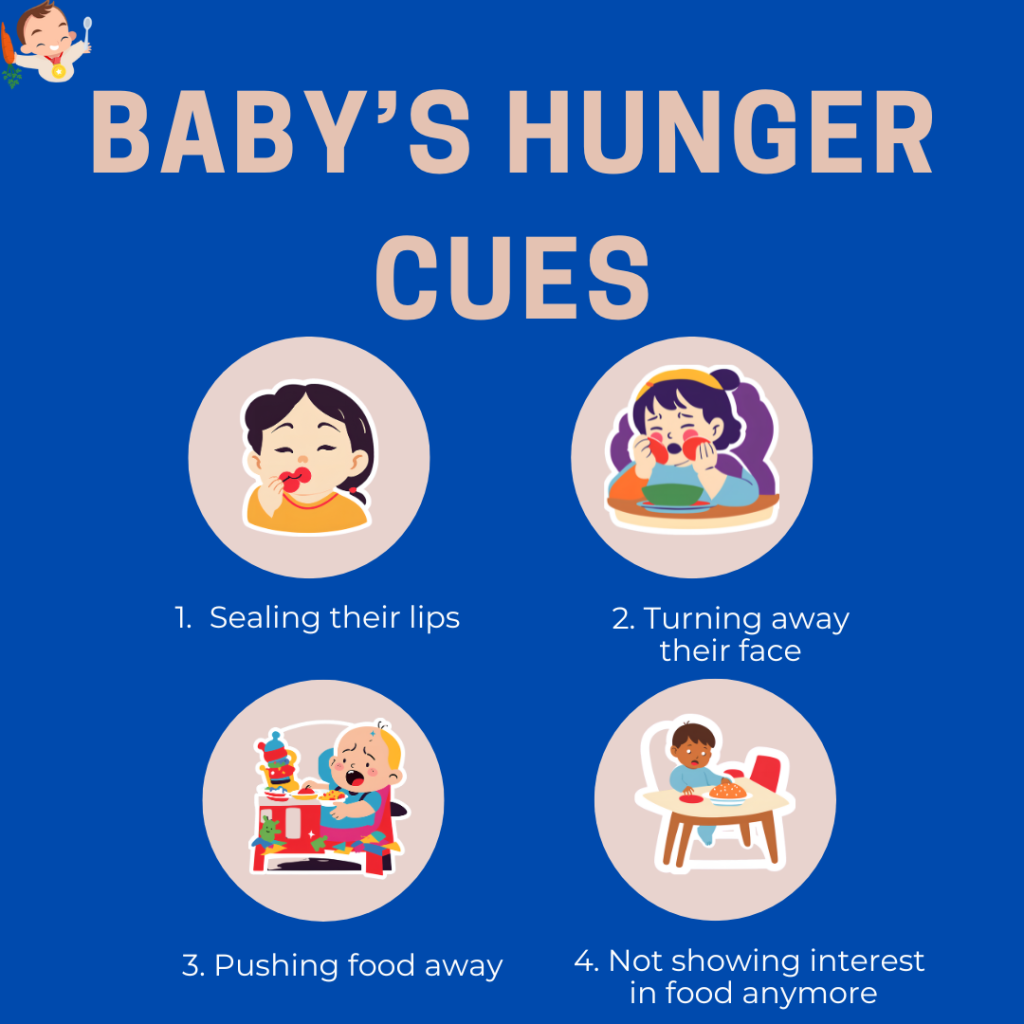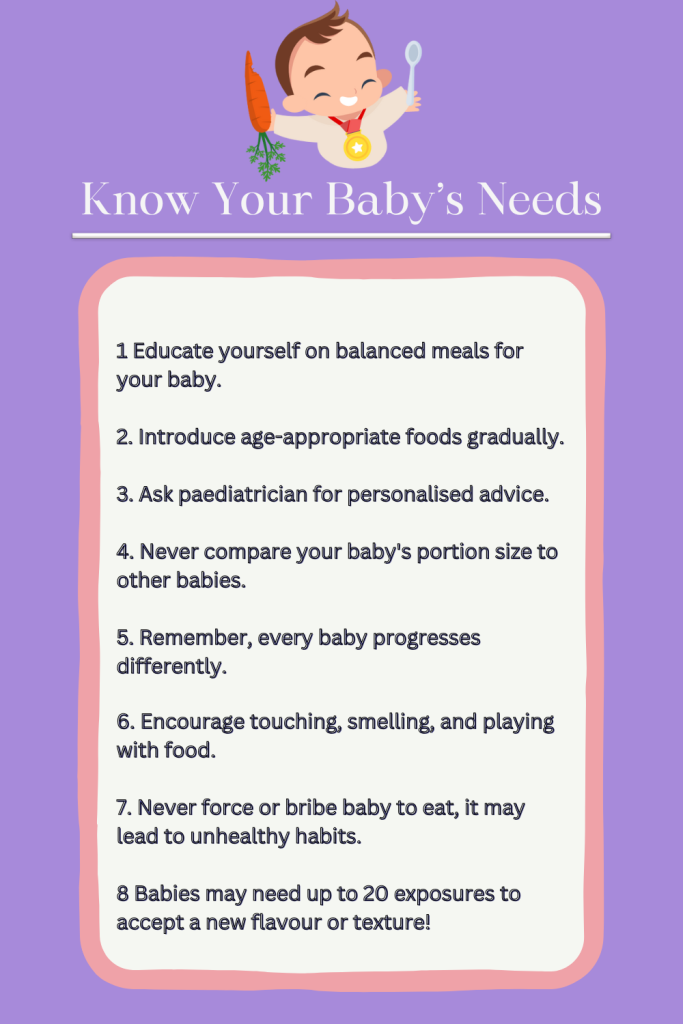Parenting comes with countless pieces of advice! From how to make your baby sit by themselves to the best ways to burp them, and from managing BLW mess to handling tantrums, there’s no shortage of suggestions—especially when it comes to how to do baby-led weaning!
Family and friends might pressure you to introduce new foods to your baby’s diet too early or suggest that you let your toddlers snack on junk food. With all this external pressure, it can be challenging to stay strong and make healthy food choices for your little one. You can refer to this baby led weaning guide to resist peer pressure and make healthy choices for your baby.
Let’s discuss what food peer pressure means for babies and the crucial role it plays in shaping healthy eating habits from the start. Read these infant weaning guidelines to better equip yourself to resist food peer pressure while raising a healthy child!
What is Food Peer Pressure for a Baby?
Food peer pressure for babies happens when you feel compelled to feed your children in a way that goes against expert advice of BLW meals or your own judgment. This pressure often stems from:
- Family or friends comparing babies’ eating habits.
- Marketing ads promoting processed baby snacks, cereals, and formulas.
- Other parents suggest quick fixes for picky eating.
When others push their food ideas, it can make you doubt your choices. These choices matter because they shape how your baby sees food as they grow up. You can have your own list of Indian weaning foods and offer only those to your baby, not what is suggested by other parents.
Many people say to start solids before six months. This goes against what doctors tell us. Your baby needs just milk for the first six months. Some people push the parents to prop bottles at night. They think it helps babies sleep more. But this can rot tiny teeth and cause ear problems.
When other kids eat chips and cookies, you might feel you should give them too. Your toddler might see friends eating sweets and want the same. Making picky eaters finish their plates can backfire. It might make them dislike those foods more. So let your child set their own eating pace.
Early food choices during infan- led weaning stick around. If babies get too many salty or sweet snacks now, they might skip healthy foods later. Skip the processed snacks, even when others say it’s fine. Your choices now help your baby grow up healthy and happy with food.

How to Handle Peer Pressure for Your Baby
1. Know Your Baby’s Needs
Parents know their babies best. Your gut feeling about your child’s needs is right more times than not. Your baby will show clear signs when they want food or feel full.
When others suggest what to feed your baby, stay firm with your choices. Whether you pick infant led weaning or purees, stick to what works for your family. Other parents mean well, but your way is right for your child.
Each baby grows at their own speed. Some babies eat more solids early on, while others take time to try new foods. Your baby’s food path will be different from other babies. You can keep doing what feels right for you and your baby. You can listen to advice but pick what fits your family. Your baby shows you what they need through their actions and sounds.
Trust yourself as a parent. You watch your baby each meal and know their likes and habits by offering them a variety of Indian weaning foods slowly. You will have to stay steady with your feeding plan, even when others give different tips.
2. Establish Strong Food Preferences Early
Start by offering a variety of healthy foods during infant-led weaning as this is the time when taste preferences develop. Offer a variety of fresh, local and seasonal fruits, vegetables, whole grains, seeds, and nuts. It may take over 20 tries before your baby starts accepting new foods or textures. So don’t be discouraged if your baby rejects foods in the beginning. Stay consistent with offering new foods, flavours and textures.
Make BLW meal time a family affair, eat with your baby at the same time as they eat. Allow them to observe you and others while eating. They love to mimic and they would start chewing by following you.
Model enjoyment of healthy foods yourself! If your paediatrician approves, allow babies to self-feed to help develop their chewing and fine motor skills. Stick to your healthy feeding plan despite any doubts from others. Offer choices, but avoid forcing food on them.
3. Make Fun and Engaging Meals
Create playful experiences around healthy foods! Give fun names to BLW meals, or cut them into cute shapes to pique your baby’s interest. For example, you might mix mashed sweet potato with spinach puree to create a green-swirled “frog dip.”
Cut parathas, cheelas and dosas into striking and attractive shapes that your baby might enjoy. For instance, a star shaped paratha or a moon shaped dosa! Likewise, add a variety of colours (through vegetables) in their food. Green spinach, red/pink beetroot, orange carrots and yellow mangoes make for excellent natural colours!
As your baby grows, encourage them to explore Indian weaning foods at their own pace. Disregard any pressure to push store-bought processed snacks too early; babies need time to discover the joy of homemade, healthy foods without stress. Try sweet potato “cars” or “carrot cat” bites for a fun twist!
By making infant led weaning enjoyable and pressure-free from the start, you help your baby form positive associations with healthy foods, developing a palate that appreciates nourishing options.
4. Involve Your Child While Preparing Meals
This cooking together activity will not only strengthen family bonds but also motivate children to try new foods. Assign age-appropriate tasks like measuring spices, rolling rotis, or mixing chutneys while preparing for their BLW meals.
Allow your child to help chop veggies for sambar, blend paneer for matar paneer, or shake up raita mixtures. Teach them skills suited to their age, such as tearing greens, mixing dough, or grating carrots. This hands-on experience builds their confidence in preparing wholesome foods.
When you resist giving in to peer pressure for fast-food favourites, you open up a world of Indian weaning foods for them to explore!
5. Inculcate Food Values in Your Little One
Babies are curious observers and they love to see their parents/siblings and often mimic family members’ behaviours. If you or other family members frequently snack on sweets or indulge in junk food, your child may adopt those unhealthy habits too. To ensure healthy eating habits in your baby, start by improving your own.
Pack healthy lunches for yourself with leftovers like sabzi, dal, and chapati, and let your child see you enjoying balanced meals. When you enthusiastically snack on oranges, paneer, or gobi, they’re more likely to reach for those options too.
If you ask for seconds of sabzi or roti at dinner while praising the dish, your child will become eager to try it. Your enjoyment of wholesome foods motivates them to give new, nutritious items a chance.
Stand firm against food peer pressure for babies during infant led weaning while promoting a balanced diet!

Read More Blogs:-




